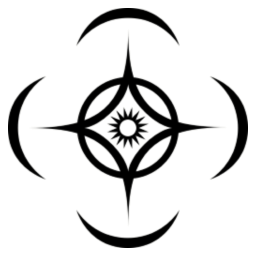I wanted to ask everything in one post instead of multiple, so I divide this one.
Shards and Vessels
It’s known that a Shard’s Intent eventually overpowers the agency of the vessel. It’s mentioned in the Stormlight epigraphs that Ati, the vessel of Ruin, was once a kind man.
I’ve been wondering about this process. Does the amount of time it takes for the vessel to lose agency depend on the shard and the vessel? For example:
- If the new vessel is already a sliver of the same shard, will they lose agency faster?
- If the new vessel is already a sliver of a shard with opposing intent, will they lose agency slower?
- If a vessel (as in the case of Sazed) holds two shards with opposing intents, are they able to maintain their personality forever, the different intents “cancelling out”?
- Do shards that seek change (Ruin, Endowment, Cultivation) in the most general way influence their vessel faster than the more passive intents (Preservation, Honor) who want to maintain?
Do the 16 shards divide neatly into eight pairs of opposing shards? I think we’ve only seen Ruin and Preservation as complete opposites, though it could be argued that Devotion/Dominion also works.
If a person held all the shards (assuming the Splintered ones are somehow fixed, and that no one managed to stop them in the process), what would happen? How about holding all the dawnshards as well? Would any mortal being be able to handle such a great amount of investiture?
What level of control, if any, does a shard have over their associated magic system? Could Sazed decide to “turn off” allomancy for the day?
Related somewhat, what shards is surgebinding associated with? It looks like it can be performed with any one of Stormlight, Voidlight and Lifelight. Does surgebinding with one of these constitute a separate magic system? If so, what actually are the Surges? If not, what’s common to Honor, Cultivation, and Odium?
The Metallic Arts
In Allomancy, the metal that is burned is not the actual source of the power (investiture), but rather a key which determines which kind of investiture is drawn from Preservation.
The Lost Metal
We’ve seen in era 2 that Allomancers can also draw upon alternative sources of investiture, such as the Dor and whatever Autonomy’s portal is made out of.
This is all fine for Mistings, but how can Mistborn (or Hemalurgists) decide which ability they want, if they have no metals?
In Allomancy, even non-Allomancers can burn the God Metals, whereas in Feruchemy, unkeyed nicrosil seems to be the only kind of metalmind that non-Feruchemists can access. Why is this?
And, when saying that anyone can burn God Metals, what does “anyone” mean? Is it any living creature who can digest them? Or do they have to be Scadrians, having some of Preservation’s own investiture in themselves?
Ditto for Feruchemical nicrosil.
Can a Rosharan human (the species existed before the Shattering) burn lerasium or drain nicrosil?
Why
The Lost Metal
did Harmony make Wax and Wayne burn some lerasium instead of making them Mistborn directly, as with Spook
?
And lastly, is the cosmere-wide story arc just Autonomy and Odium being jerks to everyone?


It would be interesting to know what Sazed would drop if he died - would it be a single shard or two? - did they actually merge?
Negative is relative. If Preservation was on a wold on their own, many would consider them to be ‘negative’ (depending on situation). We don’t know that Cultivation is actually ‘good’ I can imagine that if you got pruned for the greater good, you wouldn’t consider it to be a good shard.